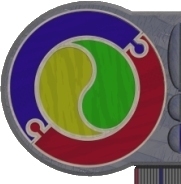The TC network : a simple Optical Character
Recognition Neural Network
Consider the following optical characters as all of
the regular orientations of the characters 't' and 'c'.
We could specify a rule for each of the orientations
of each letter as follows:
IF top left cell is on
and top centre is on
and top right is on
and middle left is off
and middle centre is on
and middle right is off
and bottom left is off
and bottom centre is on
and bottom right is off
THEN the letter is a 'T'.
|
INPUTS (1 = On, 0 = Off)
|
OUTPUT |
| Top Left |
Top Middle |
Top Right |
Middle Left |
Middle Middle |
Middle Right |
Bottom Left |
Bottom Middle |
Bottom Right |
Letter |
| 1 |
1 |
1 |
0 |
1 |
0 |
0 |
1 |
0 |
10 = T |
| 1 |
1 |
1 |
1 |
0 |
0 |
1 |
1 |
1 |
20 = C |
(note NSHELL can only currently deal with NUMERIC
DATA)
This system has 9 INPUTS, 1 OUTPUT, 8 RULES (the total
number of rows in the matrix).
CREATE a Neural Network according the specifications
above. SAVE the network under the name VISION.NET in your home directory.
TRAIN the network - this may take a number of minutes (aim
to get the minimum error (it should be possible to get 0 error).
RUN the network using some of the KNOWN data, to see if it
classifies them correctly.
TEST the network on some unknown data like the following:
..this should be more like a 'c' than a 't'
MAINTAIN the network by training it to recognise T, C and
L
Add to its training with letters H, I and X


